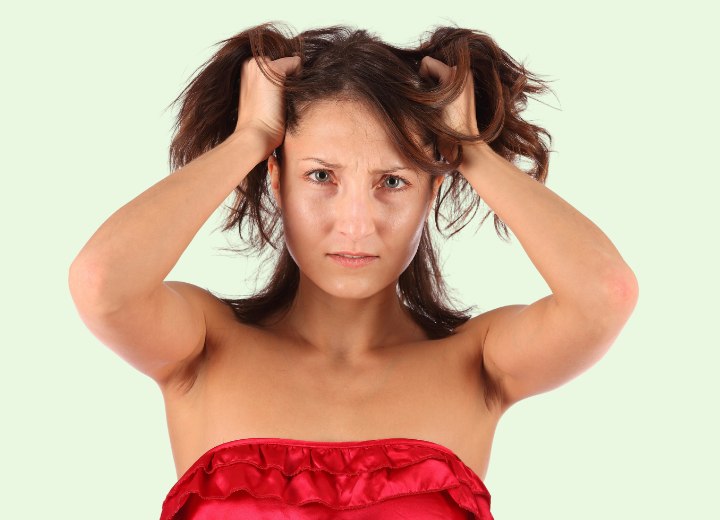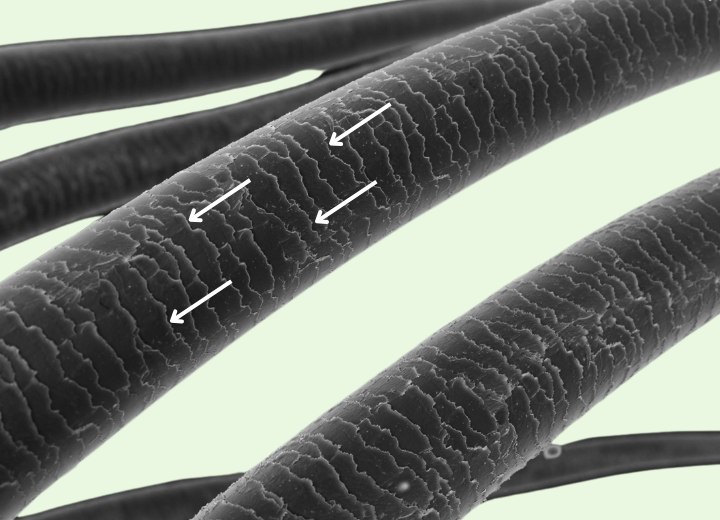Hair Frizz

A: Hair frizz is fundamentally caused by the disruption of your hair's outermost protective layer, known as the cuticle. Think of the cuticle as overlapping shingles on a roof that, when lying flat and smooth, create a sleek, shiny surface. When these "shingles" become raised or roughed up, they create an uneven texture that we perceive as frizz.
The primary culprit behind cuticle elevation is environmental humidity. On warm, humid days, your hair acts like a moisture-seeking sponge. The hydrogen bonds in your hair shaft break and reform as they encounter water molecules in the air, causing the hair to swell and the cuticle to lift. This is why many people notice their hair becomes significantly frizzier during summer months or in tropical climates. The more porous your hair naturally is, the more dramatically it will react to these humidity changes.
However, environmental factors aren't the only cause of frizz. Chemical treatments like coloring, perming, relaxing, or frequent bleaching can permanently damage the cuticle layer, making hair more susceptible to frizz regardless of weather conditions. Heat styling tools, when used frequently or at high temperatures without proper protection, can also rough up the cuticle. Even mechanical damage from aggressive brushing, especially when hair is wet and most vulnerable, or sleeping on rough cotton pillowcases can contribute to cuticle damage over time.

People with naturally low-porosity hair have cuticles that lie extremely flat and tight against the hair shaft. While this creates beautifully smooth, shiny hair that resists frizz even in humid conditions, it also means the hair is quite resistant to chemical processes. These individuals often find it challenging to achieve vibrant hair color or successful perms because their hair naturally repels water and chemicals. Their hair may take longer to get wet in the shower and longer to dry afterward.
On the opposite end of the spectrum are those with high-porosity hair. Their cuticle layers are naturally more raised or have gaps between them, making the hair quick to absorb moisture but equally quick to lose it. This hair type is prone to frizz because it's constantly reacting to environmental moisture changes. However, high-porosity hair does accept color and chemical treatments more readily, though it may also be more prone to damage from these processes.
Most people fall somewhere in the middle with normal or medium porosity hair. This hair type has cuticles that lie relatively flat but not too tightly, allowing for a healthy balance of moisture absorption and retention. You can test your hair's porosity by taking a clean strand and dropping it into a glass of water. Low-porosity hair will float on the surface for a while before slowly sinking, normal porosity hair will sink gradually, and high-porosity hair will sink quickly to the bottom.
©Hairfinder.com
See also:
How to tame frizzy hair
Dry and frizzy hair after blow-drying
Dry and frizzy hair after a sauna